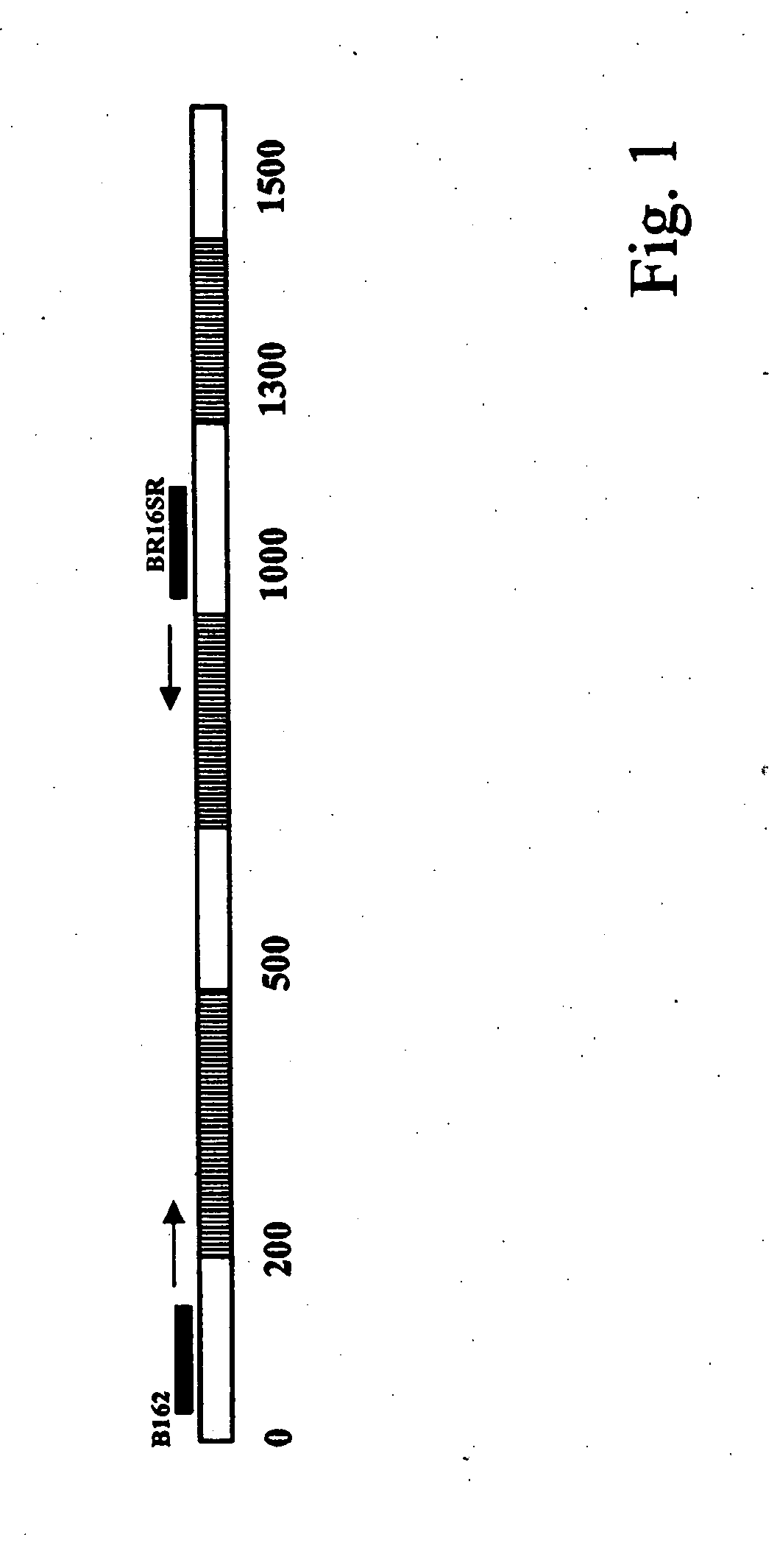Primers for Amplification and Sequencing of Eubacterial 16S rDNA for Identification
a technology of primers and eubacterium, applied in the field of oligonucleotides, can solve the problems of less strains being safely and unambiguously determined, time-consuming cultivation of bacteria, and serious illness in humans and animals
- Summary
- Abstract
- Description
- Claims
- Application Information
AI Technical Summary
Benefits of technology
Problems solved by technology
Method used
Image
Examples
Embodiment Construction
[0027]The gene for the 16S subunit of the bacterial ribosome is highly conserved over several stretches in all eubacteria. Using the specific primers according to the present invention, which are named B162 (SEQ ID No. 2) and BR16SR (SEQ ID No. 1) to conserved regions in all known bacteria, a broad-range PCR allows amplification of a >1000 bp fragment of the 16S rDNA starting with crude DNA-preparations out of any suitable bacterial culture.
[0028]In this respect see FIG. 1 which displays this stretch of the gene, and in which hatched regions indicate possible strain-specific regions (their position may vary) and in which white areas show the conserved parts.
[0029]For a secure identification of the bacterial isolate amplified, the same primers are preferentially as used for amplification of the genetic material are applied to direct sequencing of the amplified product. e.g. using the Sanger method or equivalent methods which rely on the use of a primer. Any commercially available dir...
PUM
| Property | Measurement | Unit |
|---|---|---|
| pH | aaaaa | aaaaa |
| pH | aaaaa | aaaaa |
| volume | aaaaa | aaaaa |
Abstract
Description
Claims
Application Information
 Login to View More
Login to View More - R&D
- Intellectual Property
- Life Sciences
- Materials
- Tech Scout
- Unparalleled Data Quality
- Higher Quality Content
- 60% Fewer Hallucinations
Browse by: Latest US Patents, China's latest patents, Technical Efficacy Thesaurus, Application Domain, Technology Topic, Popular Technical Reports.
© 2025 PatSnap. All rights reserved.Legal|Privacy policy|Modern Slavery Act Transparency Statement|Sitemap|About US| Contact US: help@patsnap.com

